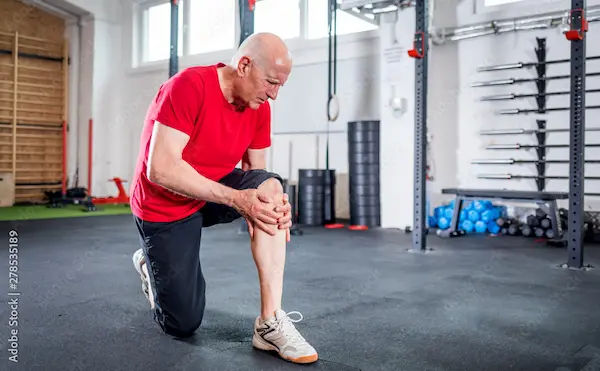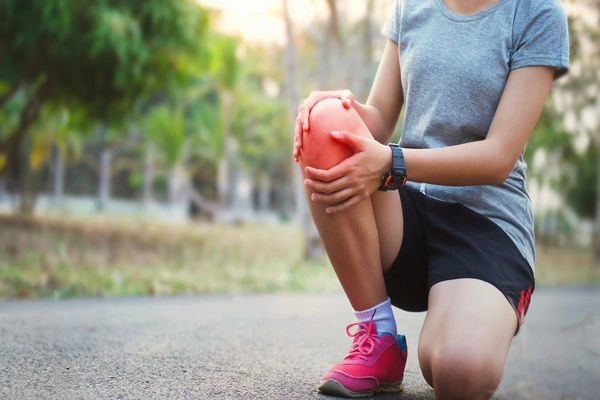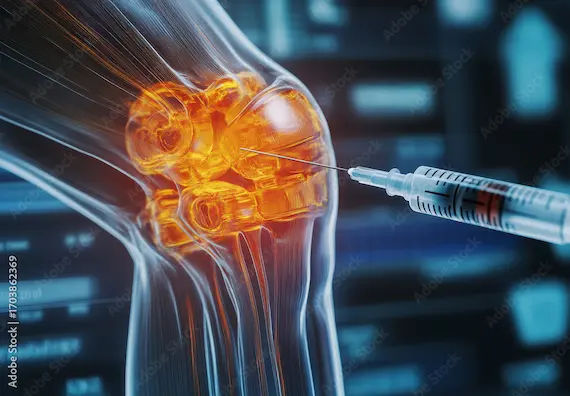Guide to Maintaining Bone and Joint Health During Winter
Discover how to protect your bones and joints during winter with expert tips on exercise, nutrition, and warmth to stay active and pain-free.


Introduction
As the winter chill sets in and we retreat indoors, many of us notice a familiar, unwelcome guest: increased aches and pains in our bones and joints. That creaky knee or stiff lower back that was manageable in the summer can become a significant source of discomfort during the colder months. But why does this happen, and more importantly, what can you do about it? This isn't just a figment of your imagination; there are scientific reasons behind this seasonal shift. This comprehensive guide is designed to empower you with practical strategies to maintain robust bone and joint health all winter long. We'll explore the "why" behind winter woes and provide an actionable plan focusing on exercise, nutrition, and lifestyle adjustments to help you stay active, flexible, and pain-free until spring arrives. Whether you manage a chronic condition like arthritis or simply want to proactively care for your musculoskeletal system, these tips will be your blueprint for a healthier winter.
Why Do Bones and Joints Ache More in Winter?
Understanding the enemy is the first step to defeating it. The increased discomfort in colder weather is attributed to a combination of physiological and behavioural factors.
The Science of Barometric Pressure
Often cited as the primary culprit, barometric pressure—the pressure exerted by the atmosphere—typically drops before bad weather. Think of your body as a balloon. When the external pressure decreases, tissues, muscles, and tendons can expand slightly. For joints already affected by inflammation or arthritis, this expansion can press against nerves, resulting in pain. While the change is minor, sensitive joints can definitely feel it.
Cold-Induced Stiffness and Synovial Fluid
Joints are cushioned by synovial fluid, a thick liquid that acts as a lubricant. Like many liquids, this fluid becomes thicker, or more viscous, in response to cold temperatures. This reduction in viscosity leads to increased joint stiffness and a reduced range of motion. You might feel this as a need to "warm up" for longer before movement feels comfortable. This is a key reason why keeping joints warm in cold climates is not just about comfort but about function.
The "Winter Inactivity" Trap
Cold, short days naturally discourage outdoor activities like walking, jogging, or gardening. This tendency towards hibernation means our muscles weaken and joints aren't moved through their full range of motion as often. Weak muscles provide less support to the joints, placing more stress on them and leading to pain. Breaking this cycle of inactivity is crucial to maintain mobility.
Seasonal Affective Disorder (SAD) and Pain Perception
The lack of sunlight in winter can lead to a drop in serotonin levels, a neurotransmitter that affects mood. It can also lower our pain threshold. This means that when you feel down or fatigued due to seasonal affective disorder, you may perceive pain more intensely. Addressing winter blues through light therapy or mindful practices can indirectly help manage winter arthritis flare-up sensations.
Consult an Orthopaedist for the best advice
Proactive Strategies to Maintain Bone and Joint Health
Now for the solutions. A proactive approach is far more effective than a reactive one. Let’s build your winter defence plan.
Stay Active: Conquering the Indoor Exercise Challenge
This is the most critical step. Consistency trumps intensity.
Low-Impact Indoor Exercises for Joint Health
The goal is to move without jarring your joints. Excellent options include:
Swimming or Water Aerobics: The buoyancy of water supports your body weight, making it ideal for painful knees and hips. Many community pools are indoors and heated.
Yoga and Tai Chi: These practices improve flexibility, balance, and strength gently. They also incorporate mindfulness, which can help with pain perception.
Stationary Cycling: A great way to get a cardiovascular workout without stressing weight-bearing joints.
Simple Strength Training for Bone Density
Strong muscles act as shock absorbers for your joints. You don't need a gym; resistance bands or bodyweight exercises like squats (holding onto a chair for support), wall push-ups, and leg lifts can be highly effective. Strength training is also vital for stimulating bone density, helping to prevent osteoporosis.
Nutrition as Your Internal Furnace
What you eat can either fuel inflammation or fight it.
Essential Winter Nutrients: Vitamin D and Calcium
With reduced sun exposure, our primary source of vitamin D disappears. This vitamin is essential for calcium absorption. Vitamin D deficiency winter symptoms can include bone pain and muscle weakness. Focus on dietary sources like fortified milk, fatty fish (saloon, mackerel), and egg yolks. A supplement may be necessary—a simple blood test from Apollo24|7 can check your levels. Calcium, the building block of bones, should come from dairy, leafy greens, and almonds.
Anti-Inflammatory Foods to Embrace
Incorporate best foods for bone health that also combat inflammation. Omega-3 fatty acids (found in walnuts and flaxseeds) are excellent. Turmeric (with a pinch of black pepper to enhance absorption), ginger, and green tea are also powerful anti-inflammatory agents. A warm, spiced tea can be a comforting and therapeutic winter drink.
The Art of Staying Warm
This is about strategic warmth, not just comfort.
Layering Techniques for Optimal Joint Insulation
Pay special attention to covering your knees, hands, wrists, and ankles. Thermal wear, especially leggings under your pants, can make a world of difference. Layering traps body heat more effectively than one bulky garment. Don’t forget warm, non-slip socks and shoes.
The Power of Heat Therapy
A warm bath or shower in the morning can loosen stiff joints. Throughout the day, use a heating pad or a hot water bottle on aching areas for 15-20 minutes at a time. The heat increases blood flow, relaxing muscles and easing stiffness.
Don't Forget Hydration
It’s easy to forget to drink water when you’re not hot and sweaty. However, dehydration can make cartilage more susceptible to damage. Keep a bottle of water at your desk and sip herbal teas to ensure you’re staying adequately hydrated.
### Conclusion
Winter doesn't have to be a season of enduring aches and pains. By understanding the reasons behind winter-related discomfort—from barometric pressure changes to inactivity—you can take empowered, proactive steps to maintain your bone and joint health. The key lies in a consistent, multi-faceted approach: staying active indoors with joint-friendly exercises, nourishing your body with the right nutrients, and mastering the art of staying warm. Remember, small, consistent actions are far more effective than occasional grand efforts. If you try these strategies and find that your efforts to reduce knee pain in winter aren’t enough, or if you have specific concerns about conditions like osteoporosis or arthritis, it's important to consult a healthcare professional. You can easily consult a doctor online with Apollo24|7 to discuss a personalised plan. Here's to a warm, active, and pain-free winter!
Consult an Orthopaedist for the best advice
Consult an Orthopaedist for the best advice

Dr. Sudipta Saha
Orthopaedician
8 Years • MBBS,(D. Ortho)
Kolkata
VDC Clinic, Kolkata

Dr. Manoj Dinkar
Orthopaedician
15 Years • MBBS, Dip (Orthopaedics)
New Delhi
THE DOCTORS NESST, New Delhi

Dr. Sushruth J
Orthopaedician
5 Years • MBBS, MS (ORTHOPEDICS),Fellowship in Arthroplasty,FRGUHS – Spine surgery,FIFA Diploma in Football Medicine
Bengaluru
Apollo Clinic, JP nagar, Bengaluru

Dr. Vishruta A V
Orthopaedician
5 Years • MBBS MS Orthopaedics
Bengaluru
Apollo Clinic, JP nagar, Bengaluru

Dr. Susheel B
Orthopaedician
13 Years • MBBS, MS, Ortho Fellowship in Trauma ( Germany) Fellowship in Arthroscopy and Arthroplasty ( Switzerland)
Bengaluru
Apollo Medical Center, Marathahalli, Bengaluru
More articles from Joint Pain
Frequently Asked Questions
1. Is the link between cold weather and joint pain proven, or is it a myth?
It is widely reported and supported by patient experience and physiological reasoning (e.g., synovial fluid thickening, barometric pressure changes). While more research is always ongoing, the correlation is strong enough for major medical institutions like the Arthritis Foundation to acknowledge and provide advice for it.
2. What are the best home exercises for joint pain in winter if I have arthritis?
Focus on low-impact, range-of-motion exercises. Water aerobics is excellent as the water supports your weight. Chair yoga, gentle stretching, and using resistance bands for light strength training are all safe and effective options to maintain mobility without exacerbating pain.
3. I take Vitamin D supplements. Should I increase the dosage in winter?
Never adjust your supplement dosage without consulting a doctor. The correct dosage depends on your current blood levels, diet, and overall health. Apollo24|7 offers a convenient home collection for tests like vitamin D to help you and your doctor make an informed decision.
4. Can a hot bath really help with bone pain?
Heat therapy is excellent for relieving muscle tension and joint stiffness, which are often associated with 'bone pain.' It improves circulation and can provide significant relief. For pain deep within the bone, however, it's best to consult a doctor to rule out other causes.
5. How can I tell if my winter joint pain is something more serious?
If your pain is severe, prevents you from carrying out daily activities, is accompanied by significant swelling, redness, or joint deformity, or persists despite self-care measures, it's time to see a doctor. These could be signs of an underlying condition that needs specific medical attention.




